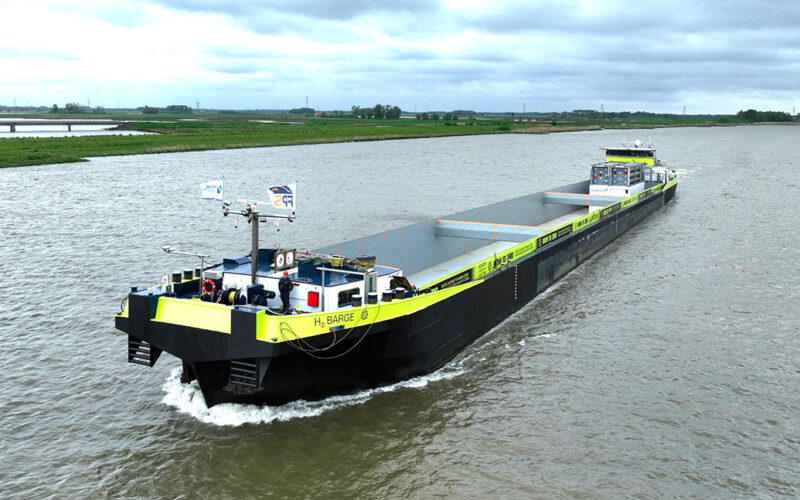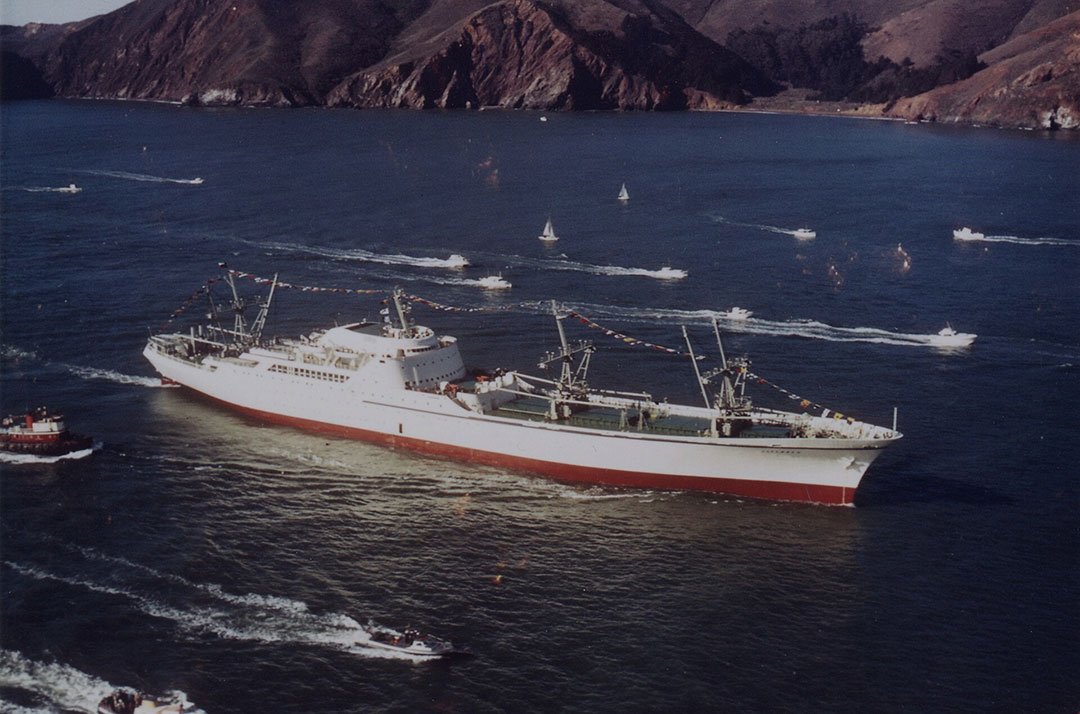
One of the true oddities of 20th Century maritime shipping was the NS Savannah, a 596-foot combination cargo/passenger vessel launched in 1959 at the New York Shipbuilding yard in Camden, NJ and the first nuclear powered merchant ship ever built.
Laid down as part of the Eisenhower Administration’s Atoms for Peace Initiative, the unique vessel was built at a cost of $47 million to U.S. Maritime Administration specifications by the New York naval architectural firm George G. Sharp and equipped with propulsion system powered by a Babcock & Wilcox pressurized-water, 74-mW nuclear reactor.
During a relatively short career, the 596-foot Savannah had sailed more than 450,000 miles visiting 32 U.S. East, Gulf and West Coast ports, as well as 45 foreign ports including Bremerhaven, Hamburg, Rotterdam, Dublin, and Southampton in an effort to demonstrate nuclear technology and its potential for peaceful use to benefit humanity.
Decommissioned in 1971, Savannah found itself the victim of relatively mundane realities that transcended the desire to promote peace and de-militarize the atom – the capacity of the ship’s seven cargo holds was too limited to be profitable and, thanks to the introduction of regular transatlantic jet service, the passenger liner industry was dying.
Now more than 60 years old, the vessel serves as a museum ship docked at Baltimore’s Canton Marine Terminal, its nuclear reactor defueled years ago with only systems, structure, and components remaining.
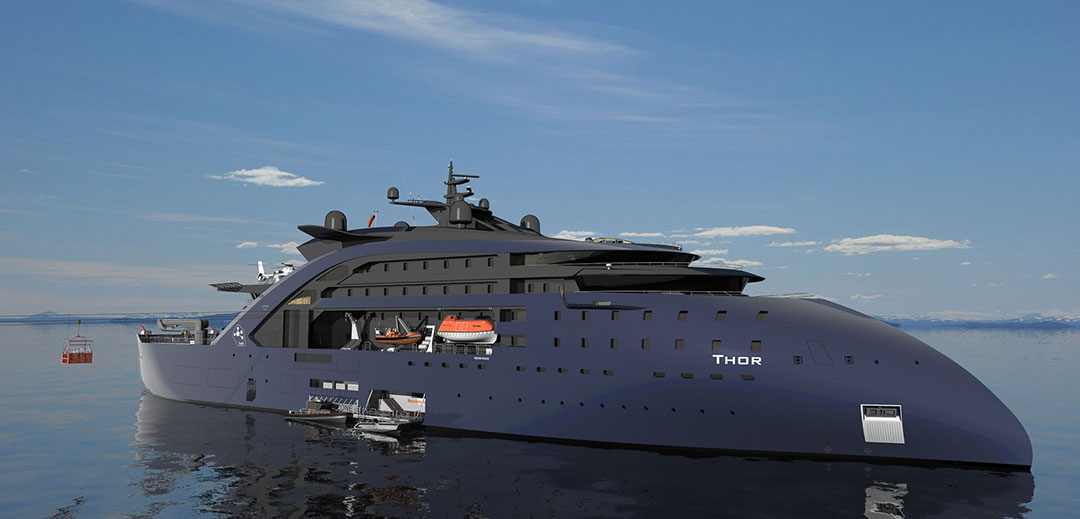
Another Chance for Nuclear
While Savannah is history, the idea of using zero-carbon, cheap and bountiful nuclear fuel for maritime commerce remains.
With the pressure on from the International Maritime Organization and other international entities to “decarbonize” vessel operations, carriers, engineers, naval architects, and shipbuilders are once again eyeing nuclear power for cargo, cruise, and other seagoing vessels. This time around, however, safer and more economically feasible technology is more readily available.
Last year, Norwegian ship designer and builder Ulstein International announced plans for Thor, a replenishment, research and rescue (3R) vessel powered by a molten salt reactor (MSR) that employs thorium for fission instead of uranium. The advantages of utilizing weakly radioactive thorium include small reactor size, greater safety, and a reduced radioactive half-life – a hundred years versus uranium’s thousands of years, the company said.
Along with Thor, Ulstein International will produce a battery-powered small cruise vessel called the Skif, designed to connect with Thor to charge its own batteries.
“Thor is essentially a floating, multi-purpose ‘power station’ that will enable a new battery revolution,” said Ulstein CEO, Cathrine Kristiseter Marti, stating that “power station vessels like Thor will charge a new generation of battery-powered cruise ships.”
In February, South Korean carrier HMM, formerly of the giant Hyundai industrial group, made public its participation in a partnership with Vietnam’s Sinokor shipping and logistics group and several other entities to develop a nuclear ship design that could be based on thorium MSR technology.
Additionally, a Hyundai group subsidiary, Korea Shipbuilding and Offshore Engineering (KSOE), has unveiled a design for a small modular reactor (SMR) that would be installed on an offshore fuel-generating vessel, much like the Thor concept. KSOE envisions this “floating” SMR being used to provide low-cost hydrogen fuel to hydrogen-powered vessels. Concurrently, Hyundai shipbuilding has said it plans to complete a design for a hydrogen-fueled, ocean-going ship by 2025.
Nuclear Propulsion of Merchant Ships is a research project based at the Norwegian University of Science and Technology that is working to develop nuclear power for maritime use. According to NuProShip Project Manager, Jan Emblemsvåg, the project aims to convert an existing cargo ship to nuclear power sometime between 2030 and 2035.
NuProShip, he said, is looking at “one of three reactor-types – MSR, liquid lead, or gas-cooled. One of our partners is Knutsen OAS, which has large LNG tankers,” said Emblemsvåg in an answer to an email query from Professional Mariner.
Some industry critics point out that aside from safety concerns, the use of nuclear power for ships would require specially trained crews that would include nuclear engineers, creating operational costs that would cut into the projected economic advantages of implementing MSR and other nuclear-based technologies.
Regarding the crewing issue, Emblemsvåg noted at a July 2023 seminar sponsored by the Gard Marine Insurance Group, “Obviously, recruiting enough nuclear-trained personnel to operate a nuclear ship is a major task. Today, however, remote operation technologies enable a control center on land to accommodate handle multiple ships if something comes up that is outside the scope of the crew competence.”
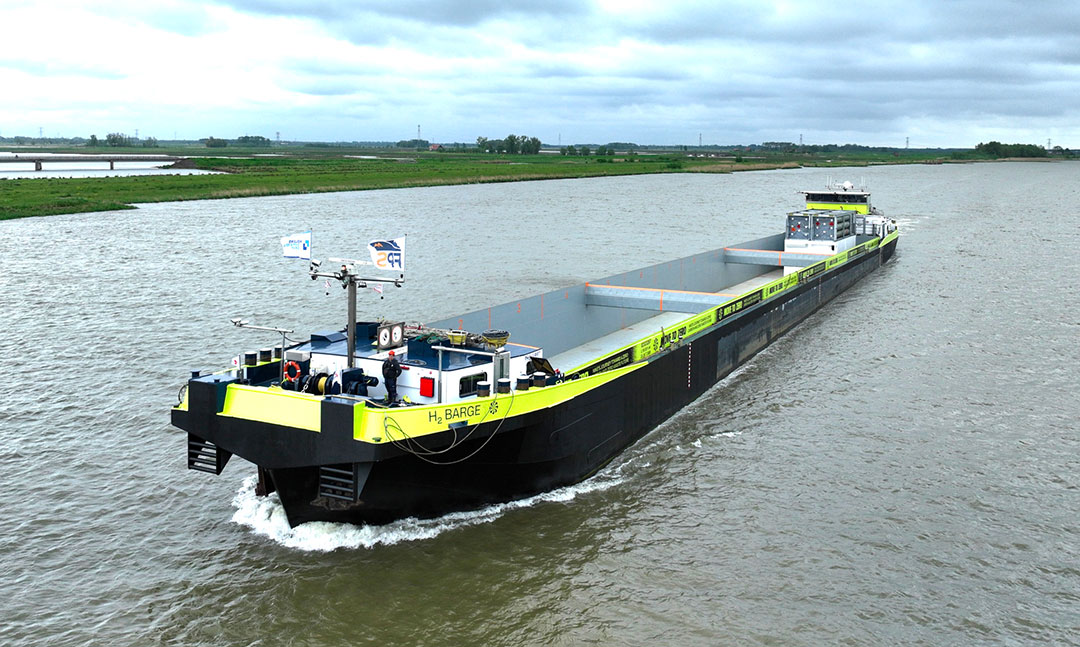
NIKE Hydrogen-Fueled Container Barge
On May 25 of this year, Oregon-headquartered international footwear company NIKE, Inc. interestingly stepped away from its core business and announced the launch of its H₂ Barge 1 container barge, the world’s first hydrogen fuel cell-powered inland container carrier.
The barge, operated by Netherlands-based Zero Proof Shipping began operations in June transporting NIKE, Inc. product between Rotterdam and Nike’s European Logistics Campus in Belgium and is operated in partnership with Dutch shipping company Future Proof Shipping, hydrogen provider Air Liquide and the BCTN network of inland terminals.
Fuel cell technology dates back to the early 1830s, when a Welsh physicist, William Grove, discovered that he could mix hydrogen and oxygen in the presence of an electrolyte and produce electricity and water with scientists experimenting with the process ever since.
A milestone occurred in the 1930s when Francis Thomas Bacon of Cambridge University invented the Bacon Cell, otherwise known as an alkaline fuel cell (AFC), that was used by NASA to power the Apollo rockets in the 1960s, and, more recently, defense and communications satellites.
Hydra, a German hydrogen fuel cell-powered cruise vessel, sailed the Rhein River in 2000, The small vessel accommodated 22 passengers and was in service for one year. Other, similar vessels debuted in the 2000s, mostly in Europe, but large-scale adoption of the technology remained elusive.
Seventeen years later, Belgium’s CMB Shipping Group launched the Hydroville, a river shuttle that carries the company’s employees between Kruibeke and Antwerp. Still in service today, the vessel uses hydrogen to power a hybrid hydrogen/diesel engine, instead of a fuel cell. CMB claims the 80-passenger Hyrdroville is the first vessel of its kind in operation and has built hydrogen refueling stations to accommodate the passenger shuttle.
According to Prof. Alessandro Abbotto, an organic chemistry academic at Milan-Bicocca University’s Department of Material Science, one of the major drawbacks of hydrogen is requiring another fuel source to enable the electrolysis process that creates hydrogen.
Writing in a recent report on hydrogen power commissioned by the Italian tire giant Pirelli, Abbotto asserted that if the original source fuel like diesel or gasoline, is not ‘green,’ then most environmental benefits provided by hydrogen are cancelled. Only hydrogen made from a green energy source, he said, is truly green; otherwise, it is “gray” hydrogen.
“The biggest challenge is to produce clean hydrogen at an affordable cost,” Abbotto stated. Currently, he added, more than 90 percent of hydrogen fuel cells in use are created with non-green fuel sources.
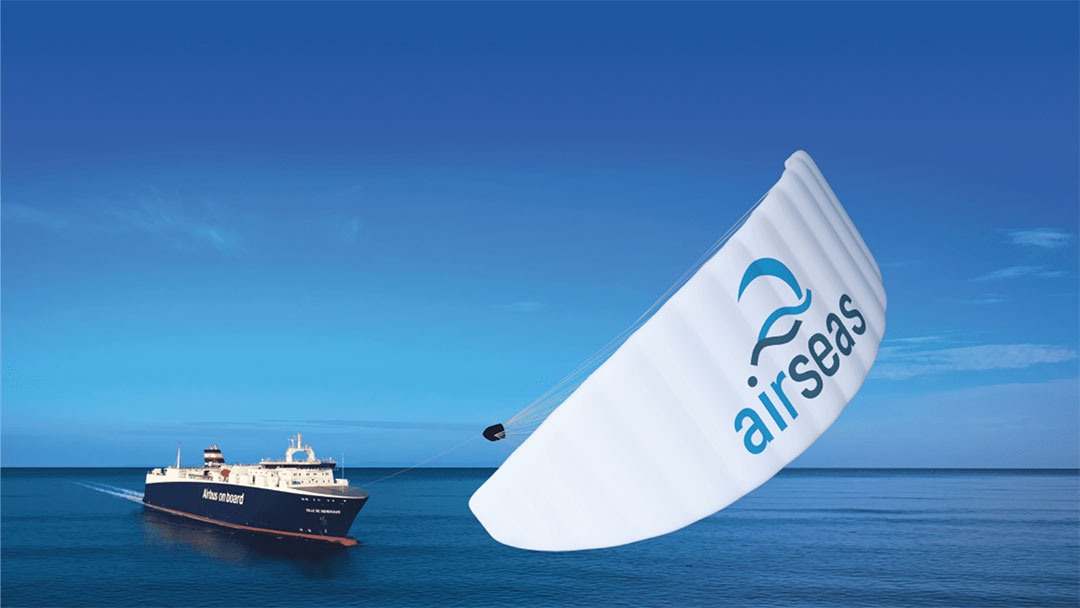
Wind Propulsion – A New, Old Idea
While infrastructure and the feasibility of utilizing nuclear fission and hydrogen, as well as other alternative power sources such as “green” ammonia, are garnering serious attention, some ocean carriers see a need for workable transitional technologies that will, in the interim, reduce carbon emissions.
Answering the call, the French company AirSeas debuted its SeaWing technology, which relies on the oldest ‘green’ source of marine propulsion – the wind.
A giant, high-tech parafoil kite tethered to a vessel to serve as an auxiliary propulsion system to standard ship engines, the SeaWing was developed by former engineers from Airbus, the EU-based aircraft manufacturer.
Founded in 2016, AirSeas said that, based on modeling and preliminary land-based tests, a SeaWing array can reduce fuel consumption and greenhouse gas emissions by an average of 20 percent.
The deployment and storage system of the kite is automated, and the crew aboard the vessel being towed can operate it by simply pressing the ‘on’ or ‘off’ switches, which unfold, launch, operate, or refold and recover the SeaWing autonomously.
While aloft, the kite’s technology collects and analyzes nearby meteorological and oceanic data in real-time to optimize the ship’s energy consumption levels with software allowing route planning according to weather variables and advising when to deploy the kite and still reach the destination on schedule.
In late 2021, AirSeas announced a 20-year agreement deal with Japanese transportation company “K” Line to install SeaWing systems on 50 of its 448 vessels. More recently, the 505-foot ro-ro vessel Ville de Bordeaux, chartered by Airbus to transport aircraft wings and components parts across the Atlantic Ocean, has tested the SeaWing system “with promising results,” the company said.
AirSeas has set a goal of establishing a full-scale SeaWing manufacturing plant by 2026.

